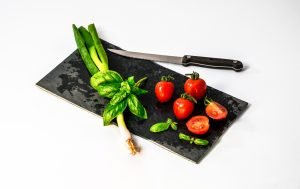 Choosing who has to cook or being stuck with the job because you’re the only one in the house can be a tough job. If one person enjoys cooking, that’s great, life should be filled with things you enjoy. However, for everyone that hates to cook, but enjoys eating, minimalist cooking should be at the top of your list. Not only is minimalist cooking easier, it has many other benefits, which can include eating healthier than you did before you started. Minimalist cooking does NOT mean buying prepared frozen meals. Even though you’re doing less, you’re also getting less nutrients.
Choosing who has to cook or being stuck with the job because you’re the only one in the house can be a tough job. If one person enjoys cooking, that’s great, life should be filled with things you enjoy. However, for everyone that hates to cook, but enjoys eating, minimalist cooking should be at the top of your list. Not only is minimalist cooking easier, it has many other benefits, which can include eating healthier than you did before you started. Minimalist cooking does NOT mean buying prepared frozen meals. Even though you’re doing less, you’re also getting less nutrients.
Use common herbs and spices to spruce up your dishes.
If you’ve opened your cupboard to find hundreds of spice bottles, it’s time to do some housecleaning. In most cases, you’ll probably use only just a few. You can also improve both the flavor and the nutrition of the dish by growing herbs in your garden and plucking a few to add to dishes for flavor. This is actually fun. Lemon balm can substitute for lemon. Cinnamon basil is great for chili. Add some chives, oregano or basil to most vegetables and get a great flavor with little effort.
Minimalist cooking means less kitchen clutter.
You don’t need all the fancy machines and cookware when you switch to this type of cooking. You do need high quality ingredients, such as fresh veggies or good quality olive oil. Keep your spices to a minimum and get rid of the clutter in your cabinets. You’ll find that cooking is more satisfying when clean up is at a minimum and you don’t have difficult recipes to follow. In fact, you can create substitutions for recipes to keep prices low or make it more convenient by using what’s in the fridge or the cheaper seasonal vegetable.
Whole foods, those less processed or not processed are a great way to start.
What’s wrong with serving a one ingredient dish? Absolutely nothing. In fact, single ingredient whole foods are far better for you than a gourmet, “healthy” dish that was cooked, frozen and comes in a box. Eating fruits, vegetables, fish, eggs and nuts are just a few examples of whole foods that taste good in their natural state or with just a minor amount of preparation. They’re filled with nutrition and don’t require a lot of effort or extra ingredients. You can make them even healthier without breaking a sweat by adding some healthy herbs and spices.
- You can take one recipe and make a number of meals. For instance, combine noodles with various vegetables you have on hand.
- It’s even easier to cook if you wash and chop veggies ahead of time and have them ready to add to meals, whether cooked or eaten raw.
- What’s better than soup on a cold day? Whether you have homemade bone broth ready in the freezer or use the natural juices of tomatoes for the soup. It’s delicious, nutritious and easy to whip up a fresh pot of soup.
- If you have left over veggies, either throw them in a soup or get creative with stir fry. You can stir fry almost any veggie and it tastes delicious.
